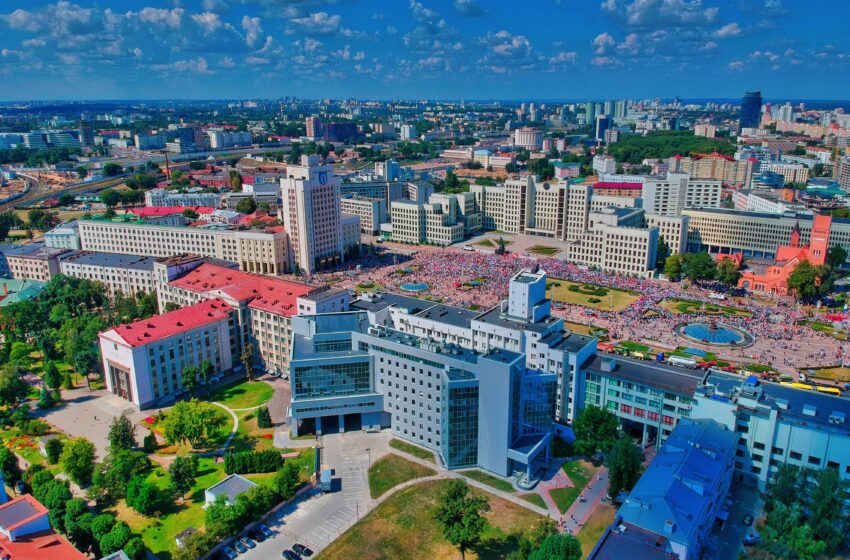
Belarus’ Only Travel Guide You Need For A Great Trip in 11 Easy Steps
- Destinations Europe
Cruisit Team
- May 16, 2022
- 1
- 4647
- 73 minutes read
Belarus’ Background
Belarus (formerly known as Belorussia) obtained independence in 1991 after over 100 years under Russian domination and as part of the Soviet Union. It has the deepest political and economic ties with Russia of any former Soviet nation. Belarus and Russia signed a treaty for a two-state union on December 8, 1999, with the goal of increasing political and economic cooperation. Despite Belarus’ commitment to a framework for implementing the agreement, substantive implementation has yet to occur.
Since his election in July 1995, Alexander Lukashenko, the country’s first president, has gradually solidified his rule through authoritarian means. The government’s restrictions on free expression and the press, peaceful assembly, and religion continue. Belarus has a Soviet-style architecture and society despite being one of the last ex-Soviet countries to open up.
Nobody ever thinks of Belarus when they picture Europe. You may only be familiar with its former tyranny, socialism, and the Soviet Union. However, if you give this country a chance and let go of your preconceived notions, you will discover that it is full of surprising moments and experiences, and it is one of the least traveled European countries. It means you’ll have nearly the entire nation to yourself because this last frontier of Europe has yet to be discovered by travelers. So, if you want to avoid the crowds in Barcelona, Paris, and Venice, this is the place to go!
Belarus is located in Eastern Europe and has borders with Russia, Ukraine, Poland, Latvia, and Lithuania. As a result, it is in an ideal location for individuals who wish to travel around Eastern Europe. Belarus is known as “Europe’s Last Dictatorship” because its president, Alexander Lukashenko, has been in power for almost 24 years.
Yet, before you let your morality weigh in on touring this country, keep in mind that Thailand is currently governed by a military junta, the Maldives’ president-elect was deposed in a coup, and the vast majority of the oil that the world uses (including you!) was manufactured in totalitarian nations (At least from the west’s perspective, right?).
So it’s difficult to judge because the only way to open up the globe and have greater peace is for us to communicate and interact with one another. This enables closed-off countries to begin to open up to those outside their bubble. Another thing to bear in mind is that we frequently confuse a government with its people, and that is not the right way of thinking.
“A former Soviet Union country with so much of its past visible on the streets and avenues, but, the country appears to be having a good time again.“
Belarus was nearly entirely isolated for many decades. It was extremely difficult to travel during this time period since practically everyone required a tough-to-obtain tourist visa. However, in recent years, Belarus has moved to open up to the globe and incentivise international tourists. They permitted people of 74 countries to visit for 5 days visa-free in 2017, and this was recently raised to 30 days visa-free!
Consider a location that receives less visitors than most European countries. One of the few last former Soviet Union countries with Soviet relics and monuments adorning the streets. A country replete with brutalist architecture, avenues, and plazas that were only seen during the communist era. The KGB still exists, and no, they are not concerned about visitors. Belarus, which held the Stalin Line in defense against Nazi Germany, may still be visited today. With World War II relics scattered around the nation, such as the Brest Fortress and Monument, it’s as if you’ve stepped back in time.
This nation not only has a dark past that is appealing to history buffs, but it also has a lot of environment and wilderness to explore. Belarus is home to the endangered European Bison, which you may see while visiting.
Belarus is an unusual location, but what makes it even more intriguing is its exceedingly warm and inviting inhabitants, who are ready to meet guests, much more than many other tourist sites.
You may enjoy the picturesque landscape, quaint villages, Soviet cities, dense woods, and friendly friendliness. It is solidly oriented toward Russia rather than the west, and it doggedly clings to the past. There is much to keep you entertained whether you meander around Soviet Minsk, ramble around Brest Fortress, or go in search of European Bison in Belavezhskaya Pushcha National Park.
Europe’s last dictatorship is not well-known as a tourist destination, but that may be part of its allure. Few people make it out here, and little has changed since the Soviet Union’s demise. To travel to this nation seems like a step back in time. There is a lot of flexibility when it comes to your Belarus itinerary, with 3 days being the bare minimum if you will only be in Minsk and ideally 7 days to be able to see both Minsk and Brest.
- Minsk was demolished during WWII and rebuilt in Soviet-style, yet it retains its beautiful aspects and offers the greatest nightlife in Belarus.
- Visit Belavezhskaya Pushcha National Park to see if you can spot the endangered European Bison.
- Brest Fortress is a Soviet War Memorial that honors the valiant defenders who perished at the onset of Germany’s invasion of Russia.
- Pripyatsky National Park offers opportunities for hiking, canoeing, cruising, and fishing.
- Mir Castle is a UNESCO World Heritage Site.
- Learn about Marc Chagall at Vitsebsk (or Vitebsk), where there is a museum and a residence where he resided as a youngster.
- Relax at one of the many lakes in Braslavskiye Ozyora National Park.
- Explore Nesvizh, including the Radziwill Palace Fortress as a highlight.
- Visit St. Anna Cathedral in Mosar Village and walk around Gomel Palace and its grounds.
- You will require a visa to enter Belarus unless you are from one of the ex-Soviet republics or a few other nations.
- If you are staying for more than 5 days, you must register your visa; hotels will do this for you.
- Public transportation is inexpensive and plentiful, but congested.
- Belarus isn’t especially well-equipped for budget travelers; hostels are few; a hospitality service or cheap hotels may be an option.
- Check with the receptionist at your hotel, hostel, or Airbnb to ensure that you’ve been registered with the Belarusian Office of Internal Affairs. This is quite crucial. If this is not done, you will have troubles since you will not be deemed to be lawfully present in the nation.
- Don’t be concerned about getting Belarusian Rubles prior to your travel. Simply bring an international debit card to withdraw local money at the Minsk airport exit.
- Most places in Belarus accept credit cards…with the exception of city buses, which require exact change because the drivers do not offer change.
- Don’t miss the Minsk metro, which is an attraction in and of itself in Belarus.
- Belarus is unbelievably safe, and it’s certainly one of the cleanest places I’ve ever seen! So don’t be afraid to go there!
Crime & Scams
Belarus is typically a secure location to visit; the police and security agencies are loyal to the regime, and any resistance can result in an instant crackdown. Although violent crimes against tourists are uncommon, you should always use common prudence.
It’s not advisable to travel to Belarus in 2022 owing to arbitrary law enforcement, the possibility of incarceration, the Russian military attack on neighboring Ukraine, and the deployment of Russian troops near the border with Ukraine.
Health
Healthcare in Belarus is mostly provided through government-owned facilities, allowing citizens to receive free services. Moreover, the percentage of out-of-pocket expenses relative to total health expenditures has traditionally been low. This means that the vast majority of medical tourism services in Belarus are rendered by the private section.
Before every travel, make sure you are up to date on all routine vaccinations. Among the key recommended vaccines globally are chickenpox (Varicella), diphtheria-tetanus-pertussis (DTP), influenza (flu), measles-mumps-rubella (MMR), polio, and shingles.
When visiting Belarus, you are required to purchase travel medical insurance and you can get it from the airport next to the airport’s passport control if you did not get it with you. It is always important to have comprehensive medical coverage when traveling because you never know what you could encounter while overseas.
Shoulder Seasons
We recommend visiting Belarus between March and May, or September and October, as this is the peak season for most sites worldwide. Prices are reduced, the street and attractions are not crowded, and the weather is ideal for wandering and sightseeing.
High (Peak) Season
June to August mark the high season months for both weather and tourism in Belarus. Some of the most popular tourist destinations in the country include Lake Narach, Minsk Sea, Prilepsky Reserve, and Berezina Biosphere Reserve. Summer is the busiest season, attracting half of the country’s visitors. Fortunately, because it isn’t a major tourist location, you won’t have any concerns going during peak season in the summer.
Off-Season
Avoid Belarus in the winter, especially if you dislike cold weather! Belarus is extremely chilly in the winter, always below 0°C, therefore you should avoid it. Locals get their heat from drinking vodka if you want to know.
Citizens of the United States, Canada, Australia, Ireland, the United Kingdom, Germany, and many other countries now have access to a 30-day visa-free program, with certain limits on how they enter the nation. You must fly into and out of the country through Minsk International Airport. You are also not permitted to fly from/to Russia, but you may fly from anyplace in the world, since there is freedom of transit between the two nations, just as there is in the European Schengen area. That implies you won’t be able to pass through passport control. You must also have at least 25 Euros in cash or proof of finances for each day of your stay.
Argentina, Armenia, Azerbaijan, Brazil, Cuba, Ecuador, Georgia, Turkey, and around 20 more countries can enter Belarus visa-free and without border entry regulations. These nations are not subject to any limitations and can travel to Belarus by plane, rail, or bus. One of the most typical methods to enter by rail is to go from Poland to the Belarusian city of Brest. However, constantly keep an eye out for changes in travel restrictions.
By Plane
Unfortunately, there are no permanent low-cost airline flights to Belarus, with the exception of Vueling, which operates seasonally. There are, however, other airlines that travel to Belarus. You arrive at Minsk International Airport if you fly into the city. Transportation from the airport to the city center is straightforward, thanks to the Minsk Airport Transfer company, which offers private shuttles from and to Minsk National Airport.
By Train
If you are traveling to Belarus from Lithuania, the best option is to take the one of the three-times-daily direct express train from Vilnius to Minsk. Tickets may be purchased both online and at the station. The same is true for Germans using trains from Berlin to Minsk, Brest, or Orsha. A direct train from Latvia, which operates every other day, connects Riga to Minsk. A direct train from Warsaw, Poland to Minsk passes through Brest at least three times every day.
Other rail connections from Ukraine are accessible from Lviv, Kyiv, Odessa, and Kharkiv. There are also various direct trains from Russia to Belarus that may be booked online.
By Bus
Buses to and from Minsk are operated by Visit Tour and Minsktrans from Poland. Buses to Belarus are operated by Sheddi Toks, Ecolines, and Kaliningrad Avtovokzal in Lithuania. Ecolines, Temptrans, and Minsktrans offer buses to and from Belarus for travelers crossing from Latvia.
By Plane
Domestic flights inside Belarus are incredibly expensive since the country is not particularly large. Trains and buses are therefore preferable choices for touring the nation. There are railway lines connecting the country’s major cities if you plan on visiting them. Otherwise, buses are available.
By Train
How do I purchase rail tickets in Belarus? It’s simple, and you can do it in English! First, check the train timetable on the Belarusian National Railway’s official website, which may be found here. Then you may either buy your ticket online or at the train station’s ticket office. There are both ancient Soviet-era trains and newer ones. It is interesting to notice the difference between traveling to and returning from Brest.
By Taxi
In Belarus, taxis are the most convenient and fastest means to move from one location to another. Numerous taxi companies operate around the clock and may be highly useful, especially in the evenings and at night when public transportation is unavailable.
By Car
In Belarus, you may also hire a car. There are various international automobile rental firms at Minsk airport. If you don’t feel safe traveling alone in Belarus, there are group trips available. Intrepid, for example, offers a nine-day tour to Belarus. However, you most likely do not require one. It is quite simple and safe to travel across Belarus on your own.
By Bus
In Belarus, there are various bus alternatives that are both inexpensive and punctual. On their website, you can view the schedule and even purchase tickets. Because they only offer it in Belarusian, simply use any translation app to translate the website.
By Metro
Minsk is quite easy to navigate via public transit. There are two metro lines that span a large portion of the city. Not only is the Belarusian metro extremely inexpensive, but all of the information posted within the stations is written in both Belarusian and English. Even the automated announcements are available in Belarusian and English. You may even pay for your metro ticket with a credit card! This country’s capital simply does not have much traffic!
Belarus has three major phone companies: MTC (MTS), A1 and Life. You will discover outstanding coverage and suitable packages with MTC (MTS) and A1 provide visiting plans that do not require registration with the authorities in Belarus and only present your passport. For as little as $10, MTC will provide you with 15 GB of Internet and unlimited domestic calls. A1 offers 5 GB of data and 50 minutes for roughly $5, good for 7 days.
Roaming prices on most European SIM cards are neither controlled or regulated in Belarus, and can be significantly higher than elsewhere in Europe. Instead, get a local SIM card in the nation. Belarus is not a member of the EU, hence international roaming regulations that apply within the EU do not apply there. The same is true for visitors from the United States, the United Kingdom, and other nations.
You also have the option of purchasing a prepaid eSim card like from Airalo, SimCorner, or Nomad. The companies provide data-only plans to put on a phone that is eSim ready, so make sure your phone is compatible. It is also possible to opt-in for a WiFi Hotspot from Solis. Check before you travel because they service certain destinations. Airalo by far has the most coverage of almost 180 countries.
Local Internet & WiFi
Nowadays, most major tourist destinations provide free WiFi. Museums, shopping malls, landmarks, and even parks provide free WiFi stations. Even if they aren’t always secure networks, you may use them to share files with family and friends. In most circumstances, you have limitless free WiFi access even in hotels or your choice of lodging options like hostels or B&Bs.
Top Places in Belarus

Mir Castle
The Mir Castle Complex is a UNESCO World Heritage Site in Belarus and an ancient fortified castle. It is located in the town of Mir, in the Kareliy District of the Hrodna voblast, 29 kilometers northwest of Niasvi Castle, another World Heritage site. Mir Castle Complex is located at an elevation of 164 meters above sea level. It is one of the few existing architectural monuments of the old Polish–Lithuanian Commonwealth in contemporary Belarus, built in the 16th century in the late Brick Gothic style.
The National Library of Belarus
The National Library of Belarus is the Republic of Belarus’s largest library. The library is located in Minsk, Belarus’s capital. It has the greatest collection of Belarusian printed materials, as well as the third largest collection of Russian literature, behind the Russian State Library and the Russian National Library.


Belovezhskaya Pushcha
Belovezhskaya Pushcha National Park is a national park in Belarus located near the Polish border and has been a part of the UNESCO World Heritage Site Biaowiea Forest since 1992, and is the remaining primeval forest component of the European woods that formerly spanned across the European Plain. It is home to a sizable population of European bison, the continent’s largest land mammal. The two nations’ boundary goes through the forest, with the Biaowiea National Park on the Polish side of the border. Since May 2015, hikers and bikers have been able to enter the forest without a visa at the Pierarova-Biaowiea border crossing.
Victory Square
Victory Plaza is a public square in Minsk, Belarus, near the intersection of Independence Avenue and Zakharau Street. The square is located in Minsk’s historic center, near the Museum of the RSDLP’s First Congress, the main headquarters of National State TV and Radio, and the City House of Marriages. A grassy park spans from Victory Square to the Svislach River and the Gorky Park entrance. Victory Square is Minsk’s most famous landmark; holiday parades pass past it, and newlyweds usually pose for photos there.
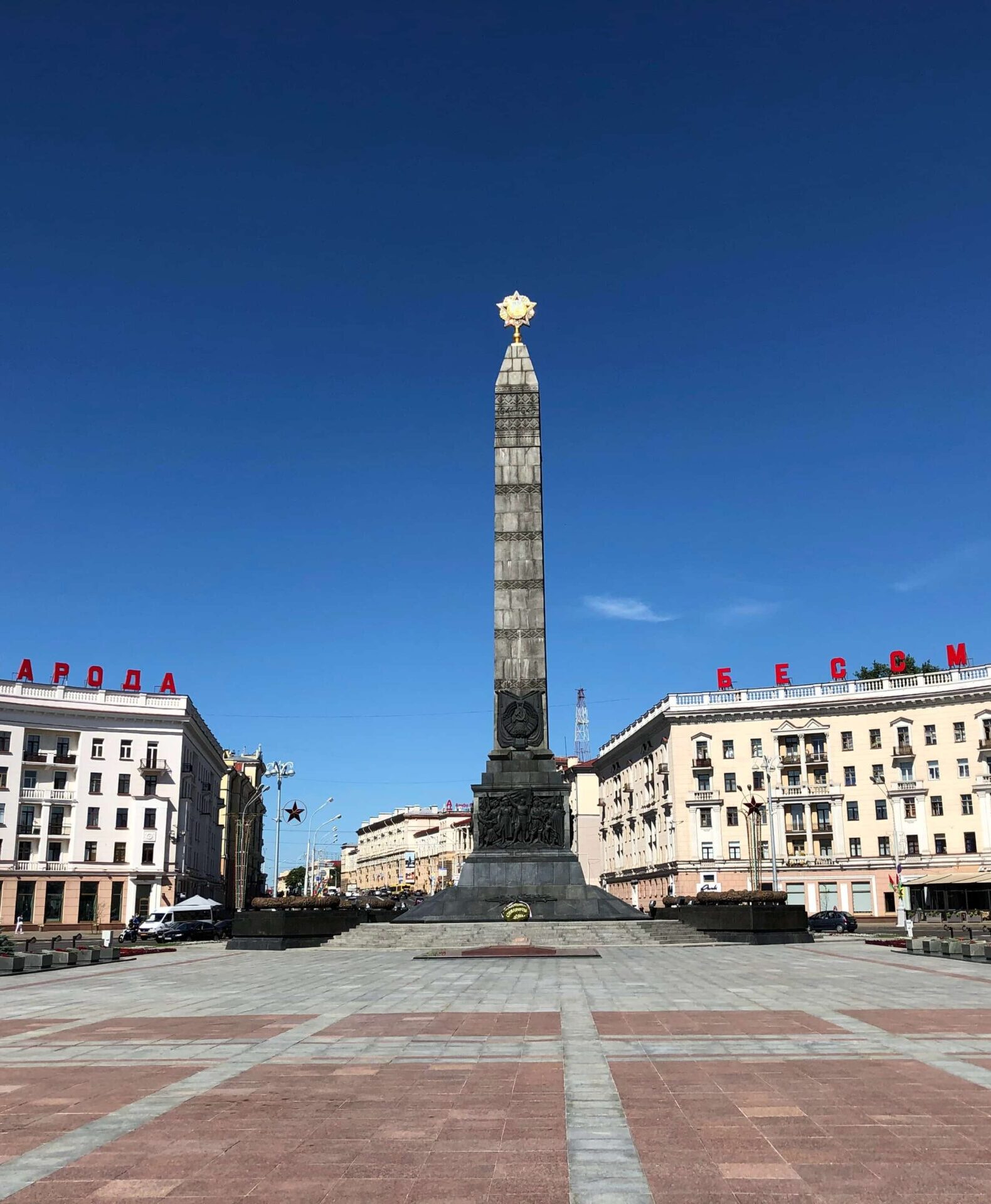
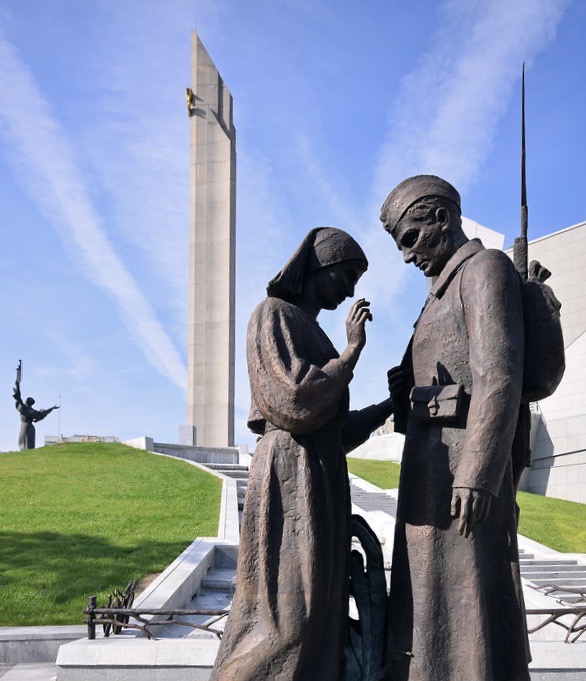
Belarusian State Museum
Minsk’s Belarusian Great Patriotic War Museum is a museum. The idea for a museum remembering the Great Patriotic War following the end of Nazi occupation arose even before the war ended. The museum was opened on October 25, 1944, shortly after Minsk was liberated from Nazi invaders, making it the first World Conflict II museum to open during the war. In 2014, it relocated to its current site. There are 24 display halls at the museum. The museum’s collection had 142,676 objects as of 2012. The museum’s staff also conducts historical research, with a focus on Belarusians in the Red Army, local anti-fascist and partisan action, and the history of Auschwitz.
3-day Itinerary in Belarus (with extensions options)
Day 1
Minsk Strolling
You’ve landed in Minsk on your first day of your Belarus itinerary, and based on when you arrive, your first day will either be a late arrival at your hotel or a half or full day from the beginning. Let’s get started if you’ve arrived in Belarus early.
First, go to Independence Square. This square is one of Europe’s largest and used as a ceremonial venue during the Soviet era. Belarussians would watch parades on several key days in the country at the time. Do you know how big Belarus’s Independence Square is? The square is roughly 7 hectares in size. Many significant buildings surround the area, including the Belarusian State University, the Minsk Metro headquarters, and the Mayor’s office. Under the square lies an underground city with shops, restaurants, and cafés, as well as parking.


After you’ve finished exploring the area, make your way to Holy Spirit Cathedral. Originally constructed in the 1600s, it was rebuilt in the 1800s. While the cathedral was originally utilized as a church, it was also used as a sports hall and a transit jail for destitute peasants. The cathedral has a beautiful view of the Svisloch River, making your stay even more lovely.
You might want to stop for lunch now, and then go to the Red Church. Built in the early 1900s, the Church of Saints Simon and Helena displays two distinct architectural styles, one Roman and one Belarusian. It’s only a short walk from the Government House, so you might go there as well.
The remainder of the day is up to you; you may have some free time to roam around the capital before picking up some dinner and returning to your hotel.
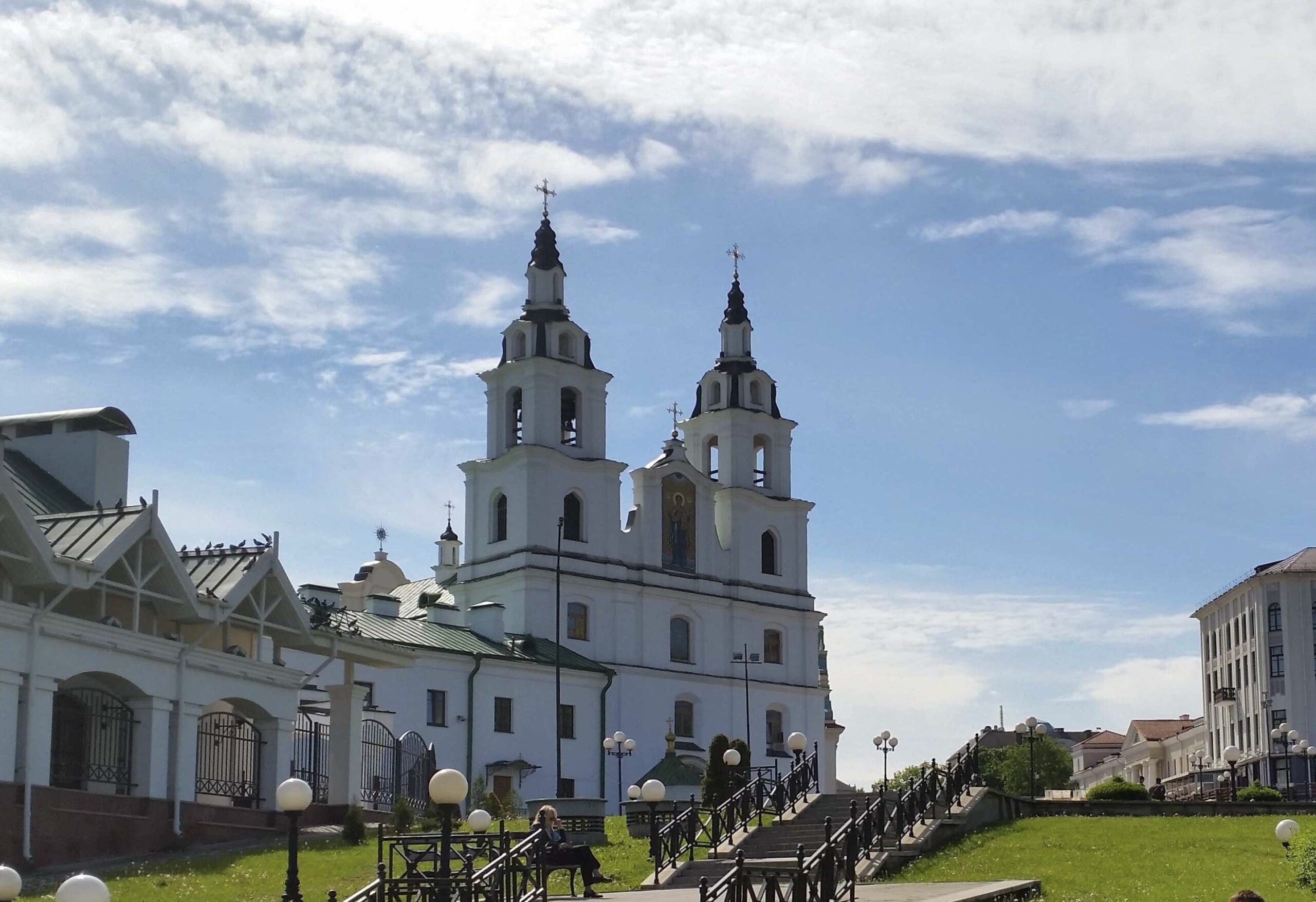
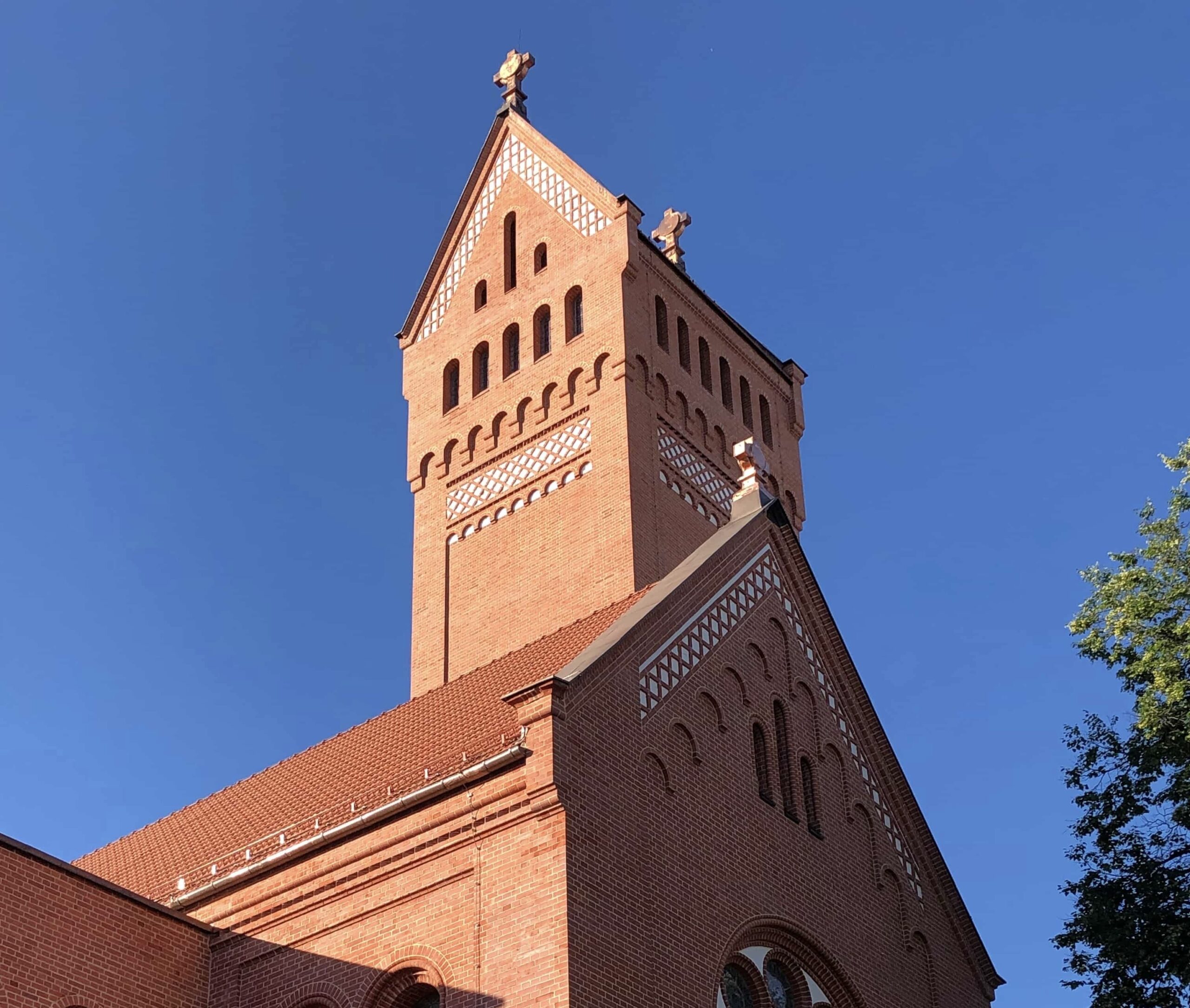
- Backpacker: Trinity Hostel & Tours
- Budget: Hotel Monastyrski Minsk City Center
- Mid-range:
- High end: The DoubleTree by Hilton Minsk
This section will be added shortly.
From the Airport to your accommodation
By Train
By Bus
By Metro
Day 2
History Flashbacks
Get dressed this morning after breakfast and walk to October Square. Because the square is part of Independence Square, you may skip this section if you’ve previously visited it.
After that, go to the Island of Tears, a memorial for the troops who gave their lives in the Soviet war with Afghanistan, which lasted 9 years. It is also one of the rare monuments in the world that was created in a defeated country. The whole ambiance is solemn and nostalgic for those who remember these difficult days.
Following your visit to the memorial, you will proceed to The Great Patriotic War Museum. The patriotic war, also known as WWII in Belarus and Russia, is a massive structure containing a wealth of information on the battle. WWII killed almost 2 million people or one-quarter of Belarus’s population (the largest share of any other country). As a result, they take this subject quite seriously. It is separated into 24 exhibition rooms, so you will most likely need to take some time out of your itinerary to investigate.


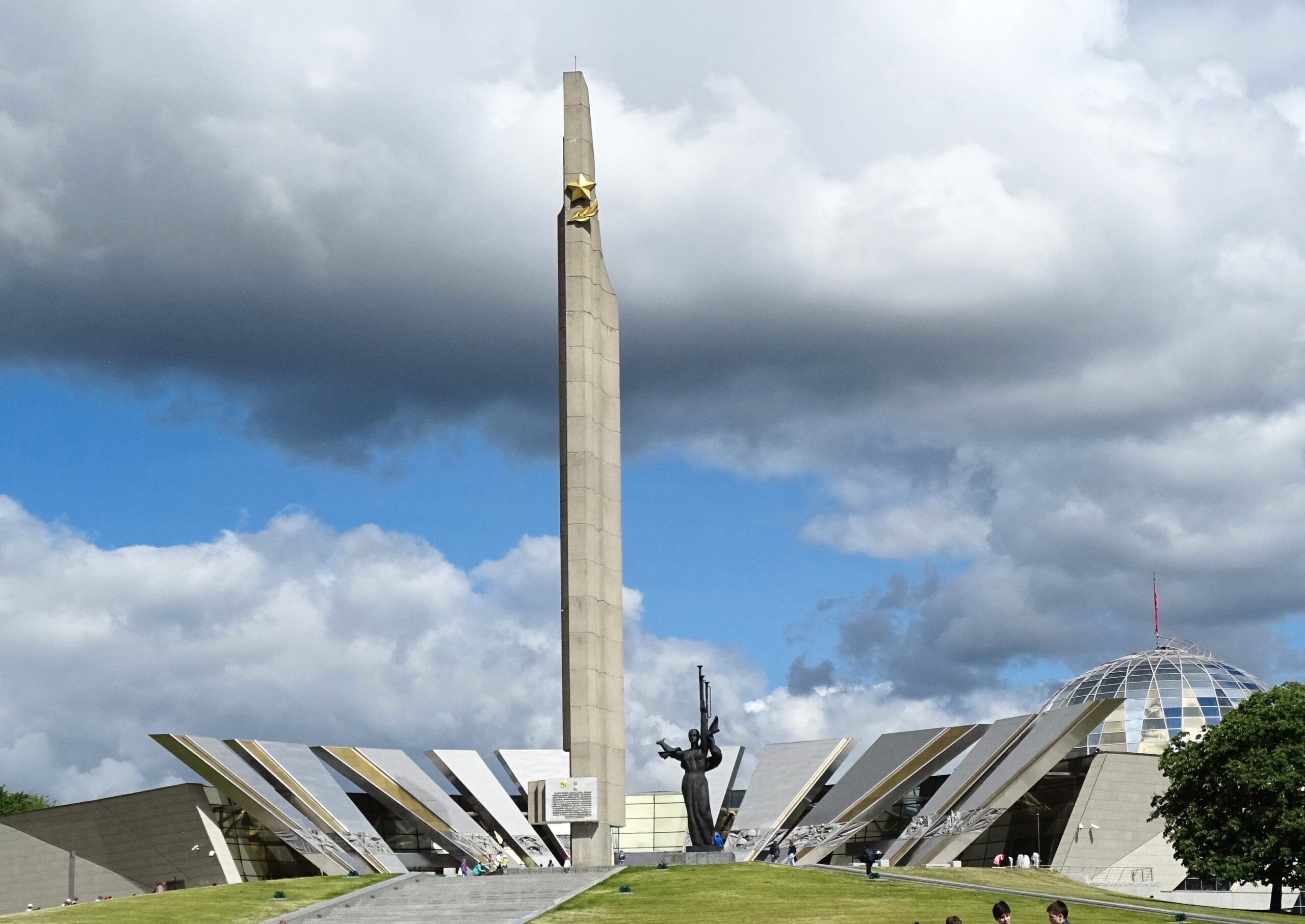
After that, take some lunch before heading to The National Library, which boasts super-modern architecture and a beautiful perspective of the city from the top. Most parts of the city have bus or metro connections to the museum and the national library. The residents of the country like reading and a peek at the building and what’s inside will show you how enthusiastic the citizens are about publishing. If you’ve ever gone to Egypt, it’ll remind you of The Great Library of Alexandria.
Allow yourself some free time to roam about or maybe spend additional time at one of the attractions for the day before making reservations for dinner at a restaurant of your choice. When you’re finished, return to your lodge.



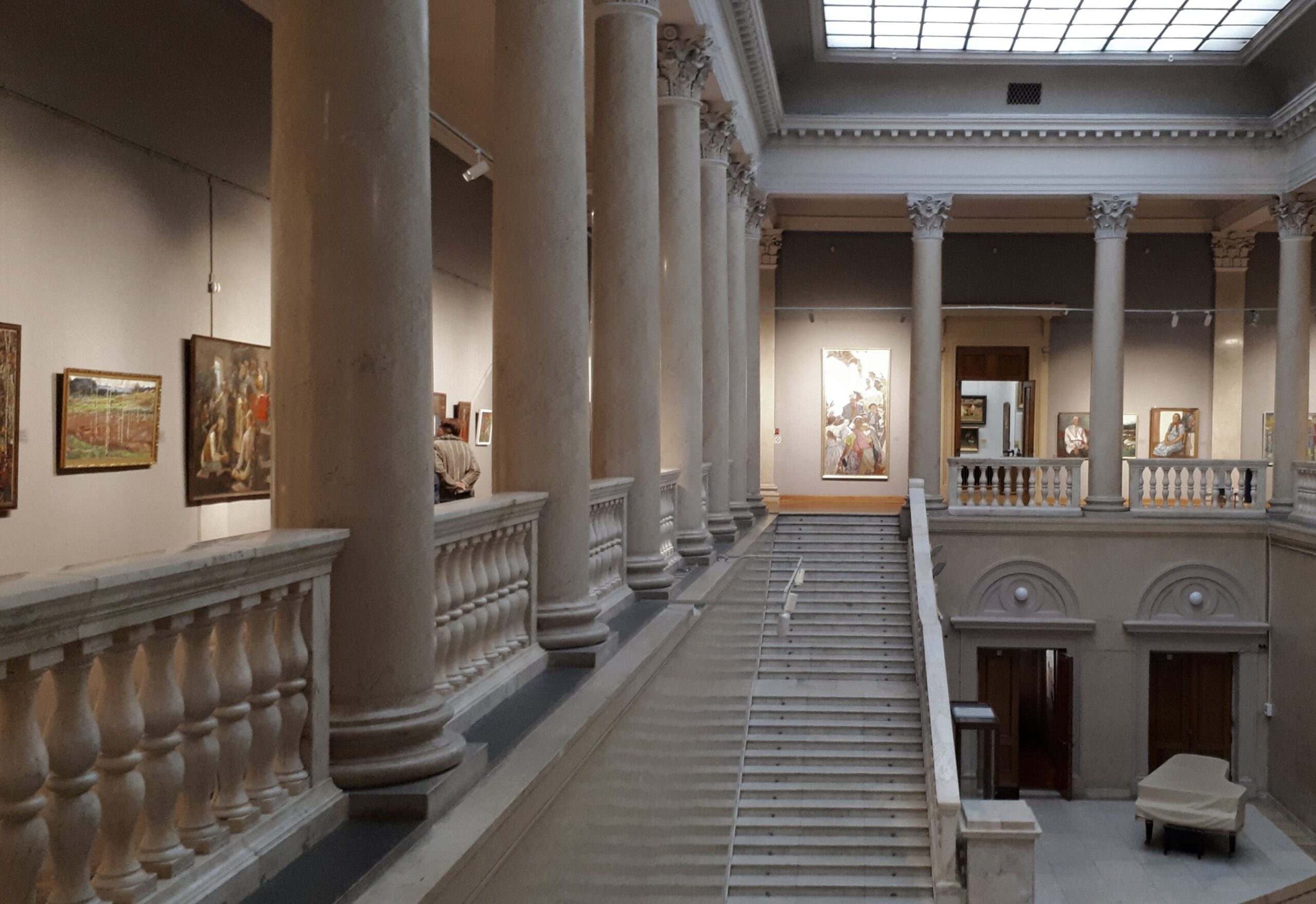
Day 3
Last Day in Minsk
If this is your last day in Minsk and you have time to explore other places, we suggest you visit one of the following:
- Pet the friendly kitties at the Cat Museum.
- Explore the art at the Belarusian National Arts Museum.
- Enjoy the Minsk Botanical Gardens.
- Attend a performance at the National Academic Bolshoi Opera and Ballet Theater.
- Experience the local life in Victoria Park
- Take the Soviet-style metro.
- The Upper Town (Svabody Square)
- October Square Yaktub Kolas Square
- See the Minsk Gates in front of the Train Station
Get ready to fly or maybe add extra days to your Belarus trip when you’re finished.
Day 4
Minsk to Brest
It’s fantastic that you have additional time in Belarus! From Minsk to Brest, take the train. The train ride from Minsk to Brest takes around 4 hours, and the ticket is reasonably priced. There are various rail alternatives available both during the day and at night.
When you arrive in Brest, you can explore the city center and the “walking street” (Sovetskaya Street), where inhabitants gather at the end of the day to socialize. Another interesting feature is that the lights (street lamps) are manually turned on every day at sundown.

- Backpacker: Hostel Brest Central
- Budget: Hermitage Hotel
- Mid-range:
- High end:
This section will be added shortly.
From the Airport to your accommodation
By Train
By Bus
By Metro


Day 5
Brest Fortress
Today, you’ll see the Brest Fortress and the memorials to the Great Patriotic War’s dead soldiers (World War II). The monuments are distributed around the fortification.
The history, monuments, and architecture are all stunning. Don’t forget about the guard shift either. You will notice young soldiers (both male and female) on guard duty when you arrive.
At the close of the day, you may either take a train back to Minsk and fly out, or you can continue your tour in Belarus. If you are one of the nations that can easily enter and exit Belarus, you can even cross into Poland.
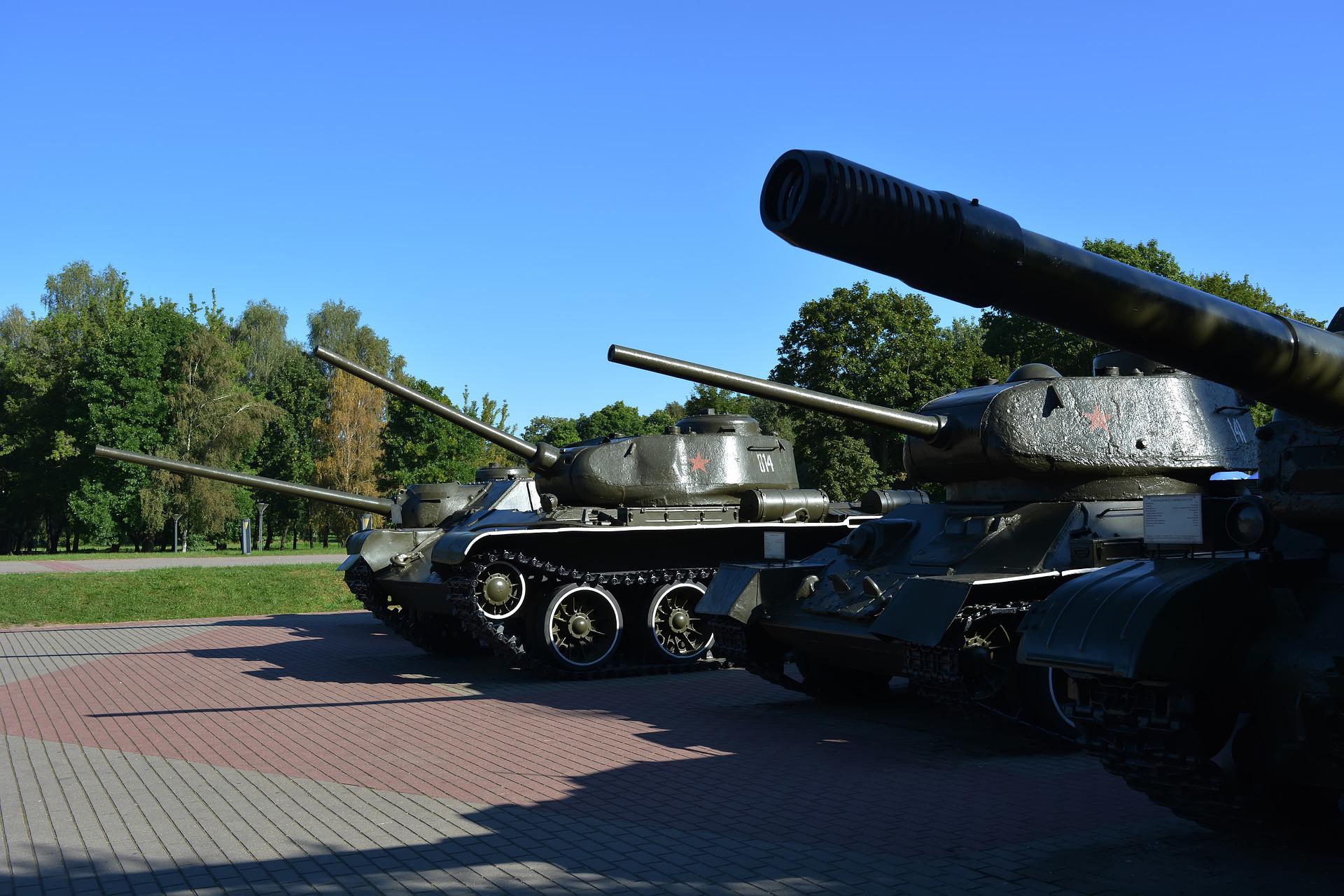
Of course, you may add a lot of things to the 5-day itinerary in Belarus if you like, but we always recommend that you don’t go in a rush so that you can appreciate the things you’ll be seeing and doing more.
This also allows you to do other things if they come up, such as seeing an attraction that wasn’t on your itinerary or going out for coffee or a beer with individuals you meet on your vacation.
Day 6
Witness the European Bison
You’ll spend another night in Brest before heading to the adjacent Belovezhskaya Pushcha National Park. This national park is a primeval woodland with old trees where you may view the famed and rare (they were pretty much extinct at one point) European Bison.
You can observe them in a fenced-off section within the park, which also has bears, wolves, and other species. But if you walk through the forest, you could encounter a wild bison in the wild; just don’t get too near! From the park, you can also view the border between Belarus and Poland, complete with armed soldiers, but don’t take photographs! Bicycles may be used to tour practically the whole park. You may hire a bike and acquire a map at the park’s entrance. It is simple to travel about.


This section will be added shortly.
Brest is 60 kilometers away from the park. So you may go on an organized adventure, rent a car, or take public transit. Visit the park's official website to learn more about excursions from Brest to the Belovezhskaya Pushcha National Park.
By Bus
Taking public transit to Belovezhskaya Pushcha National Park is simple and inexpensive. From Brest to Kamenyuki, there are 7 microbuses. Continue till the last stop, and you'll arrive at the park. Simply ask the driver or other passengers for assistance.
The bus will pick you up at the "bus station" near to the Brest railway station, plus the ticket is quite affordable!
The journey to and from the park will take the entire day. It's not a good idea to visit the park on your last day in Brest if you have to return to Minsk the next day. Because if something goes wrong, you'll miss your train. Place it in the center of your three days!
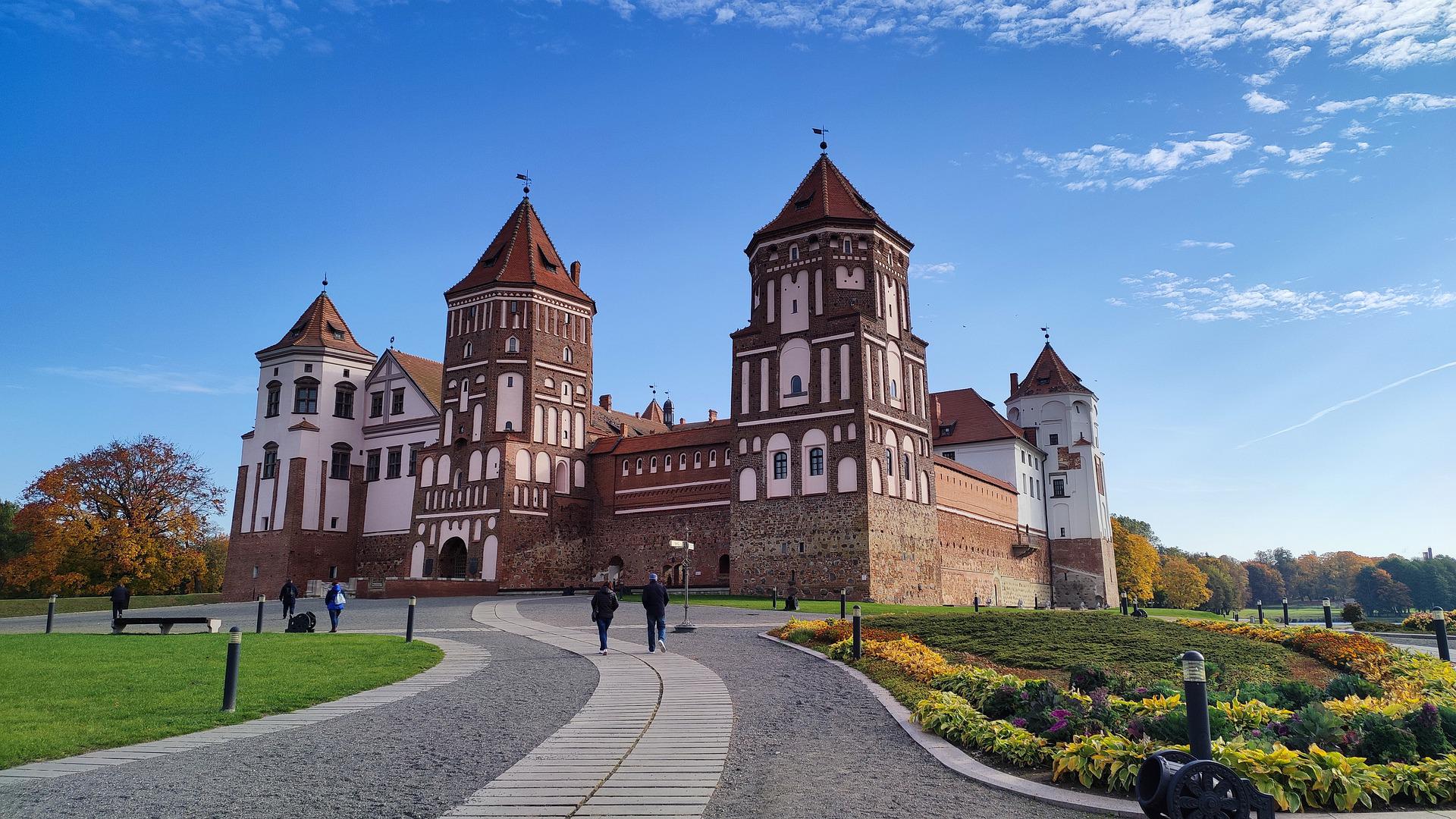
Day 7
Mir and Nesvizh Castles
This trip program lasts almost a full day and departs from Minsk. As a result, you may add one additional day in Minsk to your three-day schedule in Belarus. This roughly 8-hour tour will take you to the 16th-century towns and castles of Mir and Nesvizh. They are around 1.5 hours from Minsk.
Day 8
Minsk to Grodno
Grodno (or Hrodna) is a beautiful city in Belarus on the borders of Poland and Lithuania. Aside from the city’s attractiveness, there’s also an 11th and 8th-century castle.
Because the city is around 5 hours away from Minsk, you’d have to spend the night there and only have a half-day to explore today (with another half day tomorrow). There is additional bus service between Brest and Grodno. The city and castles are easily accessible by foot and public transit.

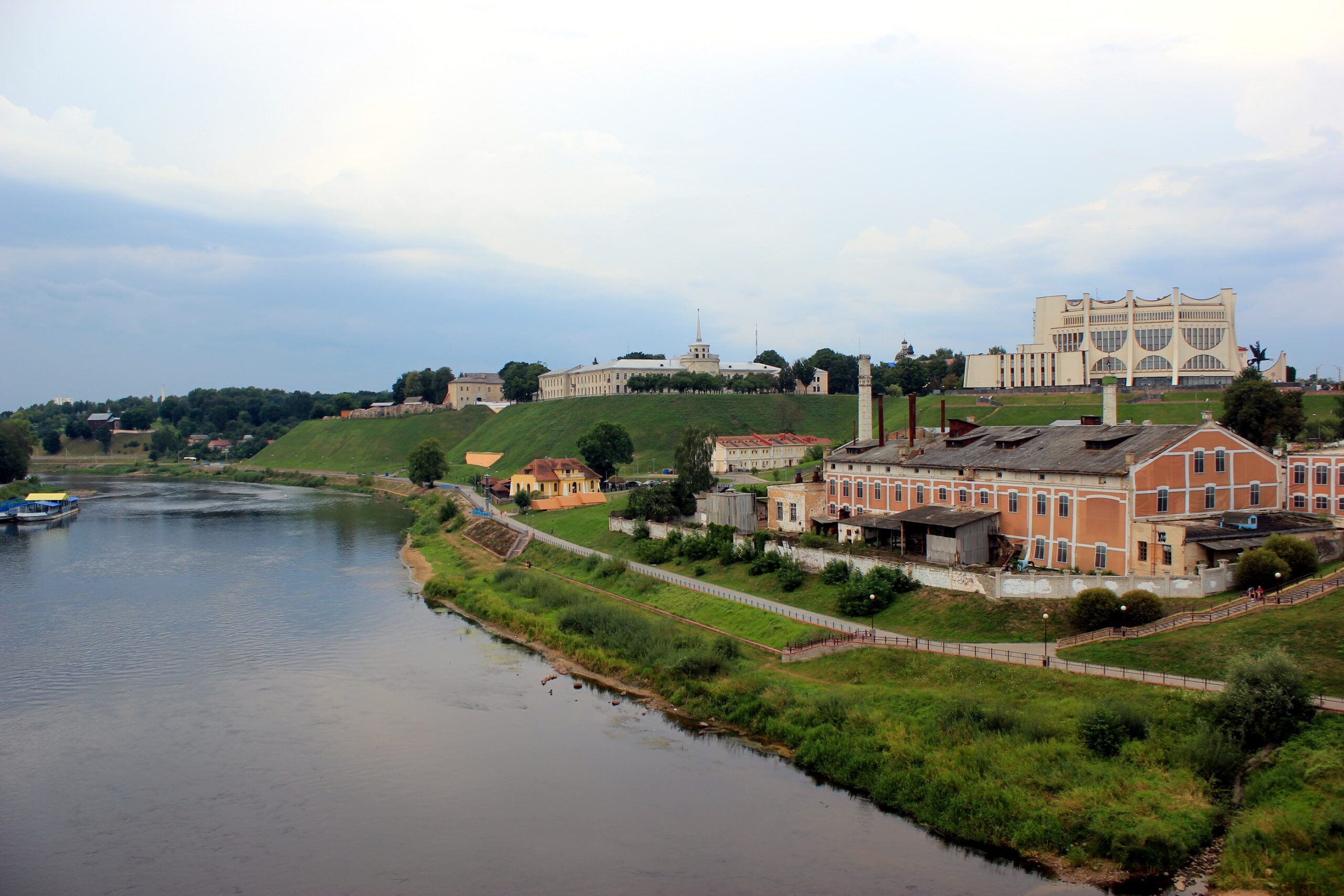

Day 9
World War II Remnants
The Stalin Line is a must-see for anybody interested in military history, weapons, military vehicles, aircraft, bunkers, and the like. The Stalin Line is an open-air museum located on the historic line of defense built to protect the Soviet Union from the Nazis.
You can explore historic bunkers, casemates, control centers, and a vast array of military vehicles.
It’s easy to spend most of your day here!
This section will be added shortly.
The Stalin Line may be visited as a day excursion from Minsk utilizing public transportation.
By Bus
Take the microbus behind Minsk Train Station and ask to be dropped off in front of the Stalin Line. If you can obtain a booklet from your accommodation or a tourist agency, display it to the driver to ensure that he understands.
That concludes the itinerary. As you can see, the itineraries are designed to be less stressful and to allow you to see as much as possible.
The Most Popular Food in Belarus
Belarusian cuisine has been greatly affected by a rich historical background and close links with Russia, Poland, and Ukraine, as well as the impact of different environmental, social, economic, and religious aspects.
The amount and diversity of goods utilized in this cuisine have traditionally made it exceedingly diversified and inexpensive for all classes, from hardworking peasants to opulent royalty.
Belarusian cuisine is known for its abundance of meat, vegetables, and potatoes, which is regarded a distinguishing aspect of the country’s food. Potatoes are so popular in Belarus that the country has the greatest per capita consumption of potatoes in the world.

Pelmeni
Pelmeni are seasoned meat dumplings wrapped in thin, unleavened dough from Russian and Belarussian cuisines. Pelmeni, unlike vareniki, are mostly packed with meat filling. This can be minced pig, lamb, beef, or a combination of meats. Few individuals in Belarus make their own pelmeni now, preferring to buy the ready-to-cook product from a convenience shop.

Nalistniki
Nalistniki are a type of Belarusian pancake that is stuffed with wrap various fillings, such as red or black caviar and sour cream. They are traditionally served with vegetables, cheese, mushrooms, or varenje (sweet berry jam) as an ordinary dish, but for a celebratory table, they are commonly filled with red-caviar and topped with sour cream and vegetables. These have been long popular in Belarus.

Syrniki
Syrniki are mini crumpets made of cottage cheese and eggs cooked on both sides in a heated frying pan. The other components, besides cottage cheese, are eggs, flour, and sugar, although many families add raisins, dried fruits, or poppy seeds. After a main dinner, Syrniki is frequently served for breakfast or dessert with jam and sour cream and is one popular dish in Eastern Europe.
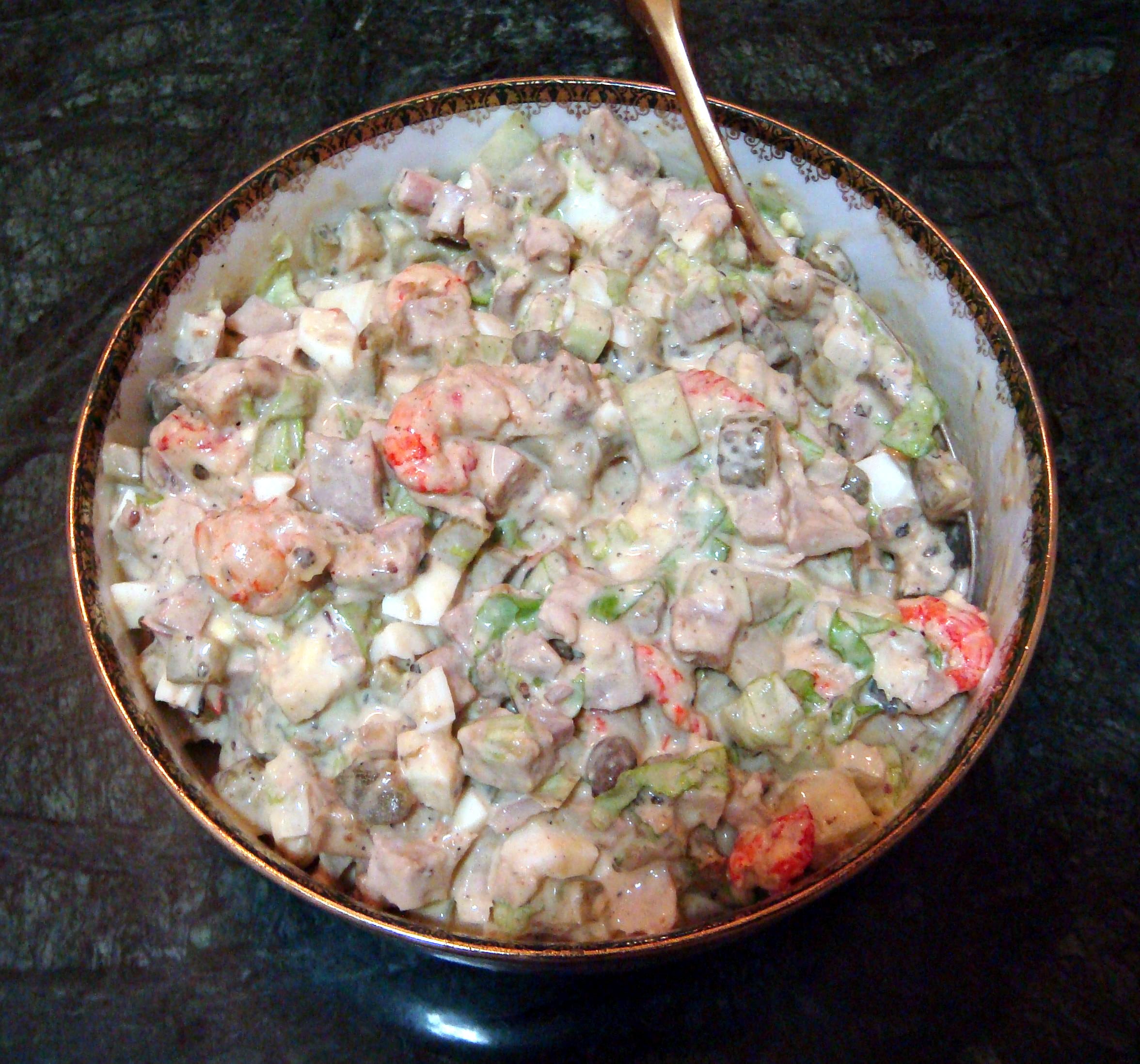
Olivier Salad
Brought by a Belgian cook named Olivier to the Moscow public in the 1860s, which became extremely popular fast. Because of its historical ties to the Soviet Union, this classic Russian salad has gained popularity in various post-Soviet nations, particularly Belarus. The recipe may vary somewhat based on the tastes of each household.

Smazhenka
Smazhenka is a Belarusian dish made up of batter with toppings and cooked in the oven. It has the look of pizza, but it is normally constructed of a thick batter with various other items on top and cooked inside an oven. Modern variants include chicken and mushrooms or ham and cheese for those seeking a vegetarian take on the classic dish.

Holodnik
Holodnik (cold soup) is a refreshing alternative to borscht and other hot soups in the summer. It includes beet extract, which gives the combination its distinctive pink hue when combined with sour cream, kefir, or yogurt. It is normally served cold with finely diced beets, fresh cucumber, and green onion.
What's the Travel Budget for Belarus?
Flights
- Flights start at roughly $90 from nearby countries. Tickets however on average cost around $550 and can cost more depending on which class and from which country you depart from.
Accommodation
- Nomad Backpacking style travelers can expect to spend around $80 for a week
- Budget travelers can expect to spend around $160 for a week
- Mid-range travelers can expect to spend around $320 for a week
- Luxury travelers can expect to spend around $750 for a week
Food Budget (Three meals and drinks)
- Nomad Backpacking style travelers can expect to spend around $13 per person per day
- Budget travelers can expect to pay around $24 per person per day
- Mid-range travelers on average would cost $30 to $40 per person per day
- Luxury travelers can expect to pay around $50 to $65 per person per day
Overall Budget Styles (Not including Flights, Tours, Transportation, or Car Rental)
- Nomad Backpacking style travelers can expect to spend roughly $180 for a week
- Budget travelers can expect to spend close to $350 for one person for a week
- Mid-range travelers can expect to spend approximately $600 for one person for a week
- Luxury travelers can expect to spend around $1200 for one person for a week
Flights
- Flights start at roughly $90 from nearby countries. Tickets however on average cost around $550 and can cost more depending on which class and from which country you depart from.
Accommodation
- Nomad Backpacking style travelers can expect to spend around $80 for a week
- Budget travelers can expect to spend around $160 for a week
- Mid-range travelers can expect to spend around $320 for a week
- Luxury travelers can expect to spend around $750 for a week
Food Budget (Three meals and drinks)
- Nomad Backpacking style travelers can expect to spend around $13 per person per day
- Budget travelers can expect to pay around $24 per person per day
- Mid-range travelers on average would cost $30 to $40 per person per day
- Luxury travelers can expect to pay around $50 to $65 per person per day
Overall Budget Styles (Not including Flights, Tours, Transportation, or Car Rental)
- Nomad Backpacking style travelers can expect to spend roughly $180 for a week
- Budget travelers can expect to spend close to $350 for one person for a week
- Mid-range travelers can expect to spend approximately $600 for one person for a week
- Luxury travelers can expect to spend around $1200 for one person for a week
Flights
- Flights start at roughly $90 from nearby countries. Tickets however on average cost around $550 and can cost more depending on which class and from which country you depart from.
Accommodation
- Nomad Backpacking style travelers can expect to spend around $80 for a week
- Budget travelers can expect to spend around $160 for a week
- Mid-range travelers can expect to spend around $320 for a week
- Luxury travelers can expect to spend around $750 for a week
Food Budget (Three meals and drinks)
- Nomad Backpacking style travelers can expect to spend around $13 per person per day
- Budget travelers can expect to pay around $24 per person per day
- Mid-range travelers on average would cost $30 to $40 per person per day
- Luxury travelers can expect to pay around $50 to $65 per person per day
Overall Budget Styles (Not including Flights, Tours, Transportation, or Car Rental)
- Nomad Backpacking style travelers can expect to spend roughly $180 for a week
- Budget travelers can expect to spend close to $350 for one person for a week
- Mid-range travelers can expect to spend approximately $600 for one person for a week
- Luxury travelers can expect to spend around $1200 for one person for a week
Flights
- Flights start at roughly $90 from nearby countries. Tickets however on average cost around $550 and can cost more depending on which class and from which country you depart from.
Accommodation
- Nomad Backpacking style travelers can expect to spend around $80 for a week
- Budget travelers can expect to spend around $160 for a week
- Mid-range travelers can expect to spend around $320 for a week
- Luxury travelers can expect to spend around $750 for a week
Food Budget (Three meals and drinks)
- Nomad Backpacking style travelers can expect to spend around $13 per person per day
- Budget travelers can expect to pay around $24 per person per day
- Mid-range travelers on average would cost $30 to $40 per person per day
- Luxury travelers can expect to pay around $50 to $65 per person per day
Overall Budget Styles (Not including Flights, Tours, Transportation, or Car Rental)
- Nomad Backpacking style travelers can expect to spend roughly $180 for a week
- Budget travelers can expect to spend close to $350 for one person for a week
- Mid-range travelers can expect to spend approximately $600 for one person for a week
- Luxury travelers can expect to spend around $1200 for one person for a week
If you want to know what to pack, read this list below:
- This is a casual country that can get extremely cold, dress accordingly
- Raincoat or Light Waterproof Jacket
- Hiking Boots or Sturdy Sneakers (Shoes You Don’t Mind Getting Wet)
- Sunscreen
- Insect Protection – Repellent and Clothing
- Sunglasses and Sun Hat
- Water Shoes
- Beach Towels/Sarong
- Dry Bag
- Money Belt or Cross Bag
- Portable Medical Kit
- Flashlight or Headlamp
- Copies of your passport.
- Get all the needed vaccinations before traveling
- A power bank is a must in any travel.
- Always have some cash with you just in case there are no ATMs and if you are dealing with a business that solely accepts cash
- Get yourself an adapter for your gadgets
- 1 toothbrush
- 1 tube of toothpaste
- 1 razor
- 1 package of dental floss
- 1 small bottle of shampoo
- 1 small bottle of shower gel
- 1 towel
- Deodorant
- Band-Aids
- Hydrocortisone cream
- Antibacterial cream
- Earplugs
- Tylenol
- Hand sanitizer (germs = sick = bad holiday)
- A key or combination lock
- Zip-lock bags
- Plastic bags (great for laundry)
- Universal charger/adaptor
- LifeStraw (A water bottle with a purifier)
- 1 dry shampoo spray & talc powder
- 1 hairbrush
- Makeup you use
- Hairbands & hair clips
- Feminine hygiene products
Clothing For Boys
- 1 pair of jeans or khaki pants
- 1 pair of shorts
- 1 bathing suit
- 5 T-shirts
- 1 long-sleeved T-shirt
- 1 pair of flip-flops
- 1 pair of sneakers
- 6 pairs of socks
- 5 pairs of boxer shorts
Clothing For Girls
- 1 swimsuit
- 1 sarong
- 1 pair of stretchy jeans
- 1 pair of leggings
- 2-3 long-sleeve tops
- 2-3 T-shirts
- 3-4 spaghetti tops
- 1 light cardigan
Want to plan your own trip, here are some of the best resources that can help you
- Skyscanner – They search small websites and budget airlines that larger search sites tend to miss. They are hands down the number one place to start.
- Momondo – This is another favorite flight search engine because they search such a wide variety of sites and airlines. Always check here too.
- Booking.com – The best all-around booking site that constantly provides the most affordable and lowest rates. They have the widest selection of budget accommodation.
- Couchsurfing – This website allows you to stay on people’s couches or spare rooms for free. It’s a great way to save money while meeting locals who can tell you the ins and outs of their city. The site also lists events you can attend to meet people (even if you’re not staying with someone).
- Intrepid Travel – If you want to do group tours, go with Intrepid. They offer good small group tours that use local operators and leave a small environmental footprint.
- Grassroots Volunteering – For volunteering, Grassroots Volunteering compiles a list of good local volunteer organizations that keep the money within the community.
- Get Your Guide – Get Your Guide is a huge online marketplace for tours and excursions. They have tons of tour options available in cities all around the world, including everything from cooking classes, walking tours, street art lessons, and more! It has the world’s largest collection of things to do with more than 30,000 activities in 7500 destinations.
- SafetyWing – Safety Wing offers convenient and affordable plans tailored to digital nomads and long-term travelers. They have cheap monthly plans, great customer service, and an easy-to-use claims process that makes it perfect for those on the road.
- Trip Advisor: Check the reviews and then book your accommodation. TripAdvisor is where you go when you want to compare prices with multiple accommodation providers.
- VRBO: is the main search engine to use when you are looking for a home or apartment rental. It can sometimes be cheaper than hotels and it is the best way to stay in areas that offer a more local feel.
- Hostelworld: With one of the largest databases of hostels in the world, Hostelworld is the go-to site when you are looking for budget accommodation.
- Rome 2 Rio: If you want to see how to get somewhere by plane, train, bus, ferry, or car Rome2Rio lays it all out for you as well as related costs.
- World Nomads Insurance: When traveling you should always have travel insurance. We have found the best bang for your buck is by far World Nomads.
Final Thoughts on Belarus
In Belarus, you’ll be far into Eastern Europe in the ex-Soviet territory. But the country offers a lot of history which is woven throughout the country, making even its grim Soviet past so appealing and scenic. This makes Belarus a country worth visiting. From the age old architecture and creative marvels to its natural beauty and wildlife, the beauty of Belarus is a dramatic one. Would you visit Belarus?
Have you been to Belarus? Let us know how your trip was in the comments below.
If you’re a citizen from one of the countries that don’t need a visa and don’t need to enter and leave from the Minsk airport, you can explore the neighboring regions entering or leaving by train or bus. Where would you head next?
1 Comment
Very interesting!